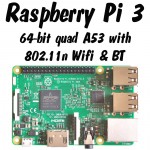
Raspberry Pi 3 model B launch is today’s big news. The new Pi sports a 64-bit quad-core ARM Cortex A53 CPU with VideoCore IV GPU packaged into the new BCM2837 chip. This 1.2GHz CPU offers ~50% speed improvement over the Pi 2’s BCM2836.
Video Overview
Pretty much all the information and impressions I have of the Raspberry Pi 3 model B are in this short video…
…but if you prefer to read, it’s all here too…
Now With Built-in WiFi & Bluetooth
The other major news is that the Raspberry Pi 3B now has built-in 802.11n WiFi and Bluetooth 4.1 courtesy of the very shiny (and very hard to photograph so you can actually see the writing) new BCM43438 chip on the underside of the board.
It also has an amazingly compact antenna on the topside near the DSI port.
And here’s a closer view of the WiFi/BT circuitry itself…
What About The Price?
It’s also the same traditional Raspberry Pi model B base price of $35 plus shipping and local taxes.
Full Specifications
Silicon
- New BCM2837 chip
- Quad-core 64-bit ARM cortex A53 CPU
- Clocked at 1.2GHz
- ~50% faster than Pi 2
- 400MHz VideoCore IV GPU
- 1GB LPDDR2-900 SDRAM
- New BCM43438 chip for WiFi/BT
- 802.11n Wireless LAN
- Bluetooth 4.1
Connectivity
- 26 GPIO ports in the standard 40-pin Pi configuration
- 4 USB 2 ports
- 100Base-T ethernet
- DSI port
- CSI port
- 4-pole composite video/audio
- HDMI 1.4
Power
- Micro-usb power in
- 2.5 Amp supply recommended
While we’re on the subject of power, I’ve done some preliminary measurements and will publish my findings in full with updated charts and some new tests in a day or two. The Pi3B uses virtually the same amount of power as the 2B until you start hammering those A53 CPU cores. The 4 cores appear to use 100-110 mA each when heavily loaded (compared with the Pi2B’s 40-50 mA per core).
So What’s Changed?
The antenna is positioned where the PWR and ACT LEDs were on Pi2. These LEDS have been moved to the other side of the DSI connector. The RUN (reset) header has also been repositioned near to the USB ports.
There’s a new GPIO expander chip (U20) XTAA FSB near the DSI connector. I’m not sure what this is for. I wonder if it’s for some new DSI related feature or it could be something to do with the new WiFi/BT additions e.g. a chip to handle SDIO? (WJDK – but I expect we will soon.)
The ‘neon death flash’ semiconductor (U16) in the power circuitry now has a black shield on it. So taking flash photos of your Pi3 while it’s running should not cause it to crash.
The micro-USB slot is no longer ‘click-in, click-out’. It’s now a friction-fit, like the Pi Zero. This should avoid accidentally popping out the SD card (which I’ve done a few times).
Because the CPU is more powerful, the recommended PSU spec has increased from 2.0 to 2.5 Amps. This should give enough headroom for devices plugged into USB.
The GPIO port pinouts are identical to B+, A+ and Pi2B…
I’ve tested both GPIOZero and RPi.GPIO and both work fine on the Pi3B.
What are the Real-World Differences?
These are really best seen in the video, but…
- It’s faster
- It has built-in wifi
- The web-browsing experience is now comparable with that of a decent smartphone
- It boots to the desktop in about 27 seconds compared with Pi2B’s 28s and Pi Zero’s 42s (all tested using the same micro-SD card)
- LibreOffice Writer opens in about 7s and Scratch in about 4s
The built-in wifi capability frees up a USB port and potentially saves £5-£10 on a wifi dongle. The Bluetooth capability saves another USB and another few pounds too (although I was unable to test this as the software was not available for pre-release testing).
But what really impressed me the most in playing with the Pi3B was the improved web browser performance. Loading up the RasPi.TV site (which isn’t particularly designed for ‘lightness’) and watching an embedded video, using the inbuilt wifi, was a pleasant experience. Even the Pi2 was a bit too slow at this for my patience threshold. But now I think the Raspberry Pi has really arrived as a usable alternative to a desktop computer. No I’m not going to give up my quad-core i7 MacBook Pro 16GB to use a Pi3B for day-to-day work, but it’s now fast enough not to be offputting for the iPad generation.
It’s a great achievement to increase the speed, add WiFi/BT and hold the price at the same level as before.
Where Can I Buy One?
If you want one, hop on over to RS components or the PiHut
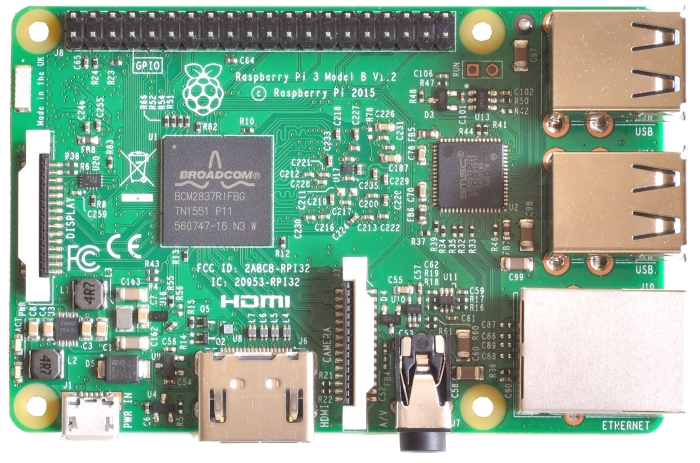

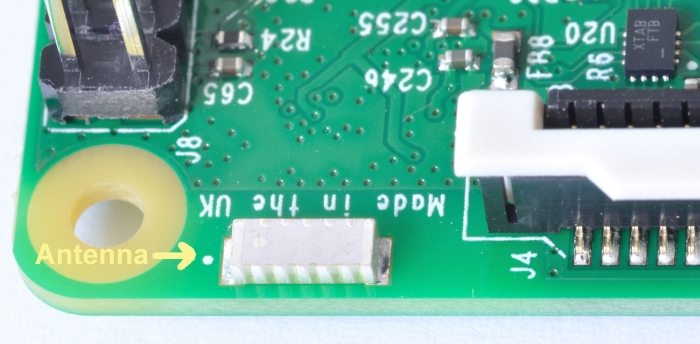
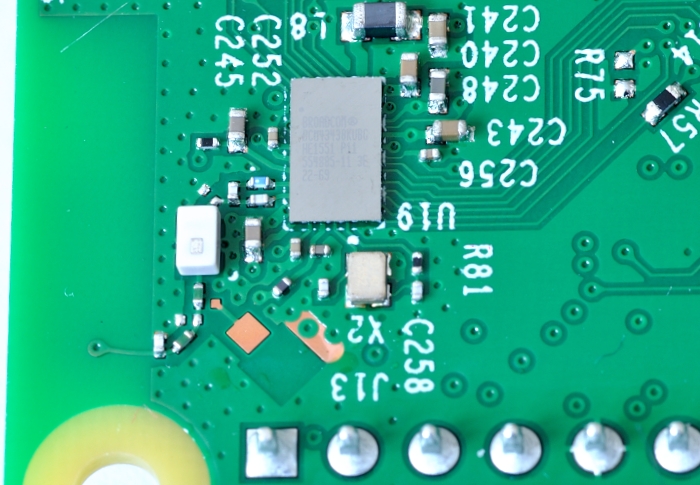
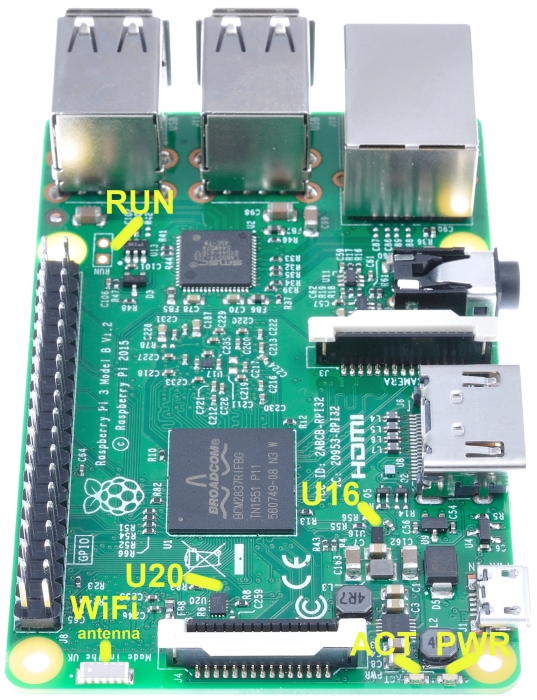
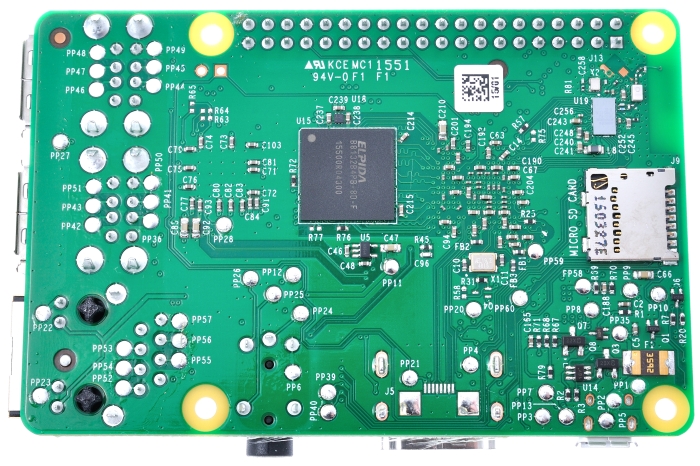
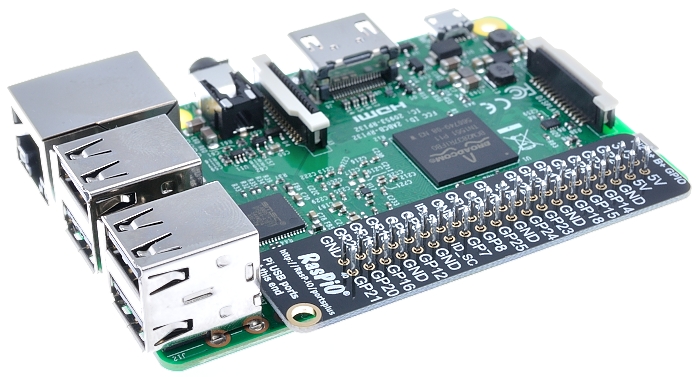
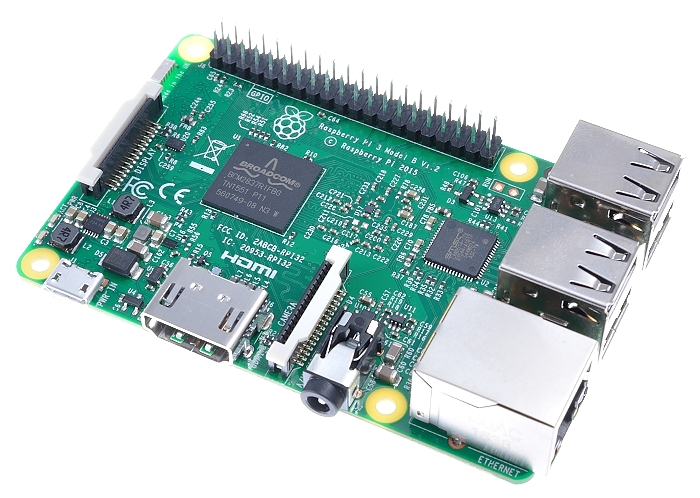
Wow! Pretty awesome improvements! And still 35$!
Haswell 4570 Sysbench benchmarks for comparison (I can post the Banana Pi ones later if no one else does until then):
$ sysbench –num-threads=1 –test=cpu –cpu-max-prime=20000 –validate run
sysbench 0.4.12: multi-threaded system evaluation benchmark
Running the test with following options:
Number of threads: 1
Additional request validation enabled.
Doing CPU performance benchmark
Threads started!
Done.
Maximum prime number checked in CPU test: 20000
Test execution summary:
total time: 22.2810s
total number of events: 10000
total time taken by event execution: 22.2802
per-request statistics:
min: 2.21ms
avg: 2.23ms
max: 7.92ms
approx. 95 percentile: 2.25ms
Threads fairness:
events (avg/stddev): 10000.0000/0.00
execution time (avg/stddev): 22.2802/0.00
$ sysbench –num-threads=2 –test=cpu –cpu-max-prime=20000 –validate run
sysbench 0.4.12: multi-threaded system evaluation benchmark
Running the test with following options:
Number of threads: 2
Additional request validation enabled.
Doing CPU performance benchmark
Threads started!
Done.
Maximum prime number checked in CPU test: 20000
Test execution summary:
total time: 11.2829s
total number of events: 10000
total time taken by event execution: 22.5611
per-request statistics:
min: 2.21ms
avg: 2.26ms
max: 10.57ms
approx. 95 percentile: 2.31ms
Threads fairness:
events (avg/stddev): 5000.0000/0.00
execution time (avg/stddev): 11.2806/0.00
$ sysbench –num-threads=3 –test=cpu –cpu-max-prime=20000 –validate run
sysbench 0.4.12: multi-threaded system evaluation benchmark
Running the test with following options:
Number of threads: 3
Additional request validation enabled.
Doing CPU performance benchmark
Threads started!
Done.
Maximum prime number checked in CPU test: 20000
Test execution summary:
total time: 7.7343s
total number of events: 10000
total time taken by event execution: 23.1960
per-request statistics:
min: 2.27ms
avg: 2.32ms
max: 10.08ms
approx. 95 percentile: 2.32ms
Threads fairness:
events (avg/stddev): 3333.3333/0.47
execution time (avg/stddev): 7.7320/0.00
$ sysbench –num-threads=4 –test=cpu –cpu-max-prime=20000 –validate run
sysbench 0.4.12: multi-threaded system evaluation benchmark
Running the test with following options:
Number of threads: 4
Additional request validation enabled.
Doing CPU performance benchmark
Threads started!
Done.
Maximum prime number checked in CPU test: 20000
Test execution summary:
total time: 5.9425s
total number of events: 10000
total time taken by event execution: 23.7594
per-request statistics:
min: 2.31ms
avg: 2.38ms
max: 22.69ms
approx. 95 percentile: 2.38ms
Threads fairness:
events (avg/stddev): 2500.0000/41.08
execution time (avg/stddev): 5.9399/0.00
No Gigabit ethernet and no option for Andoid OS as well, while the direct competitor Pine64 offers Gigabit ethernet and Ubuntu/Andoid/OpenHub options.
Nobody’s forcing you to buy a Pi3B, if it doesn’t have all the features you’re looking for… ;-)
IMHO one of the biggest features (of any of the models of Raspberry Pi) is the size of the community.
I dunno if it was deliberate Alex, but parts of your video reminded me of an American-style infomercial ;-)
Should get my Pi3B from Element14 tomorrow.
I took a slightly different approach this time. I wrote my full blog post first, then used that almost like a script for the video. I was quite pleased with the outcome. The blog post and video represent about 3 days’ work. It’s a non-trivial task. :)
Thanks for the fast work; now I see what case mod for the LEDs I need to do ( and can work on that while waiting for Pi3Bs to arrive), looks easy fiber optics to jump over mount point.
Much appreciated!
U20 (XTAA FSB) seems to be FXL6408, GPIO expander connected to VideoCore IV VPU (datasheet: https://www.fairchildsemi.com/datasheets/FX/FXL6408.pdf ). On RPi 3, LEDs are now connected to VPU, not CPU according to https://www.raspberrypi.org/forums/viewtopic.php?f=72&t=139684&sid=a23c9e0c9f0827fd3d5928877c0f10c2&p=932212#p926333 . And I can see the string “FXL6408” in start_db.elf (Try `strings start_db.elf | grep -i fxl6408` in you shell). FXL6408 actually have 16 pins around the chip, which is the same as U20. So the chip seems to be FXL6408.